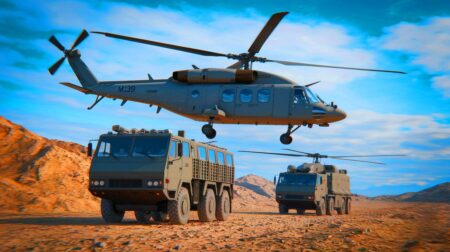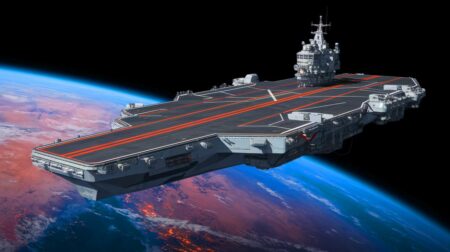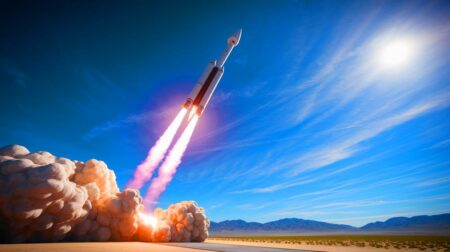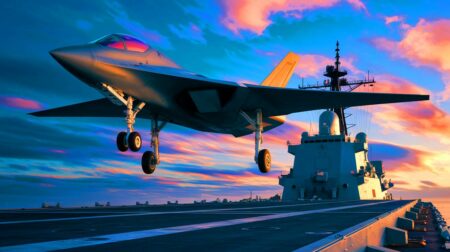| IN A NUTSHELL |
|
The potential evolution of the United States Air Force’s fleet has recently become a topic of intense discussion, especially with the considerations surrounding the replacement of the F-35 fighter jet. The Donald Trump administration, alongside key figures like Air Force Secretary Frank Kendall, is evaluating options for the future of U.S. air dominance. Central to this discourse is the Next Generation Air Dominance (NGAD) program, which has been proposed as a potential successor to the F-35. However, the decision is not straightforward, involving assessments of cost, capability, and strategic alignment with future military needs.
NGAD Program and a Different Successor for the F-35
The F-35 and its predecessor, the F-22, have been pivotal in shaping modern aerial combat capabilities. While the F-22 was a groundbreaking fighter in its time, Secretary Kendall highlights the multi-role capabilities of the F-35, which make it distinct. The NGAD program was initiated with a vision to surpass these fighters, aiming for an aircraft that could redefine air superiority.
Despite initial momentum, Kendall emphasizes the complex decision-making involved. The program’s continuation hinges on budgetary constraints and strategic priorities. There is a consensus on the NGAD’s potential value, yet there are competing priorities that demand attention. The choice between advancing the NGAD or opting for a more cost-effective, multi-role aircraft akin to a next-generation F-35 is crucial. This deliberation involves evaluating whether the NGAD justifies its $300 million per aircraft expense or if resources should be redirected.
US’ Next-Gen Fighter
The NGAD’s development as a sixth-generation fighter jet is a testament to the U.S.’s commitment to maintaining air superiority. This program, however, has faced setbacks due to budgetary constraints and evolving threat landscapes. The Trump administration’s role is pivotal in making the final decision on its progression.
The NGAD program not only focuses on the fighter itself but also includes the Collaborative Combat Aircraft (CCA), an unmanned semi-autonomous aircraft designed to complement the main fighter. This innovative approach underlines the U.S. Air Force’s strategic shift toward integrating autonomous systems into their operations. As Congress weighs the financial implications, the decision will significantly impact the Air Force’s strategic capabilities and readiness to face future threats.
Report on Future of US Air Force
Kendall’s report, “The Department of the Air Force In 2050,” outlines a vision where challenges from global powers like China and Russia will persist. The report predicts that by 2050, the Air Force will need to adapt to an environment characterized by ultra-long-range precision weapons launched from diverse domains, including space.
AI Outperforms Chinese Pilots in High-Stakes Aerial Combat: A Glimpse into the Future of Warfare
This future vision suggests significant transformations within the Air Force. There will be an increased reliance on autonomous systems, reduced dependency on fixed bases, and a greater focus on stand-off weapons. Furthermore, space-based sensing and communications will become integral to operations. The report also suggests expanding the airborne leg of the nuclear deterrent, highlighting the need for versatile dual-use aircraft.
The strategic decisions made today will shape the Air Force’s ability to counter these evolving threats and ensure national security in the decades to come.
Strategic Implications for the Air Force
Decisions surrounding the NGAD program and its alternatives will have profound implications for the U.S. Air Force’s strategic posture. The choice between advancing a high-cost, high-capability system like the NGAD or developing a versatile, multi-role successor to the F-35 will dictate the force’s operational flexibility and global reach.
Furthermore, the integration of autonomous aircraft like the CCA represents a shift towards a more technologically advanced and integrated force. This transition will require significant investment in new technologies, training, and infrastructure to support these cutting-edge systems. The strategic landscape in 2050 will demand an Air Force that is not only technologically superior but also strategically agile, capable of responding to a broad spectrum of threats with precision and effectiveness.
The decisions made by the U.S. administration in the coming years will set the trajectory for the Air Force’s future. As global threats evolve and technological advancements continue to reshape military capabilities, how will these strategic choices impact the U.S.’s ability to maintain air superiority and safeguard national security in an increasingly complex world?
Did you like it? 4.5/5 (20)









Isn’t $300 million per aircraft a bit too much? 😅
LOL, is this guy the ultimate assistant or what… Taking credit for programs that were started before he waddled down his gaudy escalator in his gaudy building for the first time and unleashed the political equivalent to Syphilis on the country…. NGAD and associated programs were started in 2014…
All of you replying are idiots. Trump is the master decision maker for the next 4 years. Stop complaining, your a bunch of jealous leftist lunatic children. Grow up! Wake up! But don’t Woke up!
I wonder if these unmanned planes will replace pilots entirely someday.
Interesting article, but what about the environmental impact of these new jets?
Tha what? Seriously?
Wow, Trump back at it again with another ‘game-changer’. Let’s see how this pans out! 🎮
America like Trump can’t seem how to learn how to zip it. Why is it important for the Military to give our adversaries a heads up, especially Communist China on future programs the Military is involved with? Why is there a need to know for the general public? Whatever happened to loose lips sink ships? It’s almost as if the Military wants our Adversaries to develop this type of A/C. The Air Forces bragging rights might turn to moot, if Communist China develops this type of A/C before the U.S.
Trump had nothing to do with it
Why do we need a new fighter jet when the F-35 is still relatively new?
Because aviation technology is progressing at a rapid pace and in order to maintain aerial dominance a new fighter must be produced. Let alone that it takes decades, to fully put a combat aircraft into full production. It will be at least 2035 by the time the NGAD is flying around in combat. By then the F35 will be 35 years old and obsolete…
The NGAD is supposed to replace the F-22, NOT the F-35. The author of this article is clueless. (The F-35 is not an air superiority fighter.) The F-22 has been in service for 20 years, and while it is still unmatched, you need to continue to innovate. The latest Russian and Chinese aircraft are beginning to narrow the technological advantage that the US enjoys, and that cannot be allowed to happen.
More high-tech toys for the military while other sectors suffer? 🤔
Thanks for the update! The advancements in military tech are always fascinating.
Can we really afford to spend so much on these projects with the current budget constraints?
I’m skeptical about this. It sounds like a massive investment without clear returns.
Another expensive project that’s probably going to be full of delays and overruns.
Will these new aircraft address the current shortcomings of the F-35?
What are the chances this project gets scrapped like others in the past?
F-35 successor? Sounds interesting but also costly. 🤷♂️
Can someone explain what makes the NGAD different from its predecessors?
NGAD is a program, not an actual weapons platform. This article is misleading and click bait natured.
As long as it keeps our pilots safer, I’m all for it.
This feels like a move to keep up with China and Russia’s advancements.
Will these autonomous aircraft be reliable in combat situations?
The U.S. always seems to have money for military projects. What about healthcare? 😤
I hope this isn’t just another overhyped military project.
Future threats from China and Russia? Sounds like they’re trying to justify the budget.
Is the focus on autonomous systems really the right direction for our air force?
I’m excited to see how these new technologies will shape the future of warfare.
Who will oversee the development of these new aircraft?
Seems like every administration has its own “ultimate” plan. Let’s see how this one goes.
Thanks for the insights! Always good to know where our tax money is going. 💸
Is this just another political move, or is there real merit to this project?
Hope the NGAD can live up to the hype. The bar is set pretty high!
It’s Boeing/Mcdonnal Douglas to lead with Gruman as a partner as the safe bet
They just might introduce only the drones which Mcdonnel Douglas brought to the world ,,,
New engines are installed and being tested on 15sss,,,
Lockheed was embarrassed with a first review rejection …think that unavailability number of 72% cost them Trillions